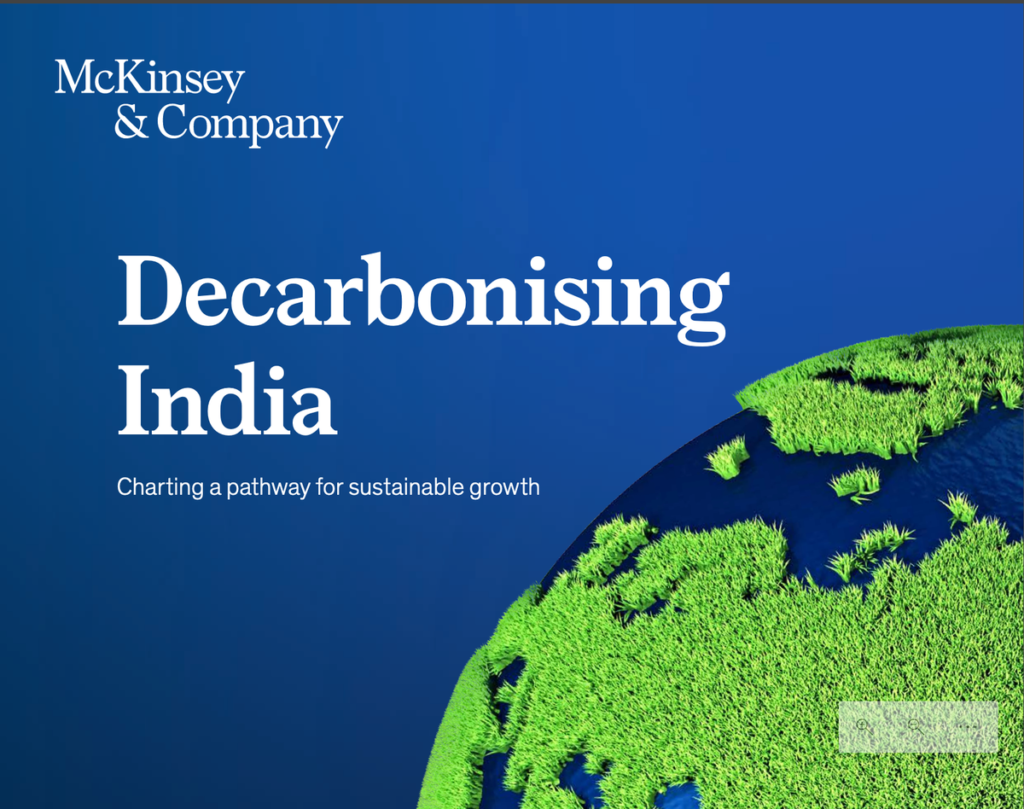At COP26, India announced its ambition to become a net-zero emitter by 2070—an essential milestone in the fight against climate change. However, India is the third-largest emitter globally, and about 70 per cent of these emissions come from six sectors: power, steel, automotive, aviation, cement, and agriculture. McKinsey recently released a report that presents insights and measures it can take to decarbonize India while pursuing economic growth.
The report titled “Decarbonising India: Charting a pathway for sustainable growth” proposes more than 100 decarbonization levers across these critical sectors and takes a deeper dive at four promising decarbonization opportunities: green hydrogen; carbon capture, usage, and storage (CCUS); natural climate solutions; and material circularity.
The report highlights that, despite low per-capita emissions (1.8 tons CO2), India is the third-largest emitter globally, emitting a net 2.9 gigatons of carbon dioxide equivalent (GtCO2e) every year as of 2019.
McKinsey not only gives a thorough review of India’s current situation but also proposes the following ten actions to accelerate India’s decarbonization:
- Lay out a detailed medium-term decarbonization plan with sector-specific priorities and policy frameworks that account for interdependencies across sectors and provide demand signals to guide corporates to invest.
- Accelerate implementation of a compliance carbon market (within three years). This would also require the creation of demand signals, especially in hard-to-abate sectors, and incentives linked to investments in newer technologies like CCUS.
- Enable banks to support the transition, catalyzed by a green-transition bank. Banks could be asked to come up with their investment glide paths within one to two years and build the necessary capability for assessing risks in these new spaces.
- Accelerate renewable adoption in the power sector to scale up capacity addition by four times and to deepen market reforms with a 30-year outlook in a manner that ensures a stable grid fed predominantly by infirm power.
- Empower a nodal authority to define a national land-use plan. Lay clear land-use guidelines for optimized use across urbanization, industrial needs, carbon sinks, agriculture, and renewables.
- Create a resilient indigenous manufacturing capability and increase investment in cleantech R&D. Efforts would be needed to develop local raw-material resources (such as rare earths), secure materials from elsewhere in the world, and produce equipment locally through mechanisms like production-linked incentive (PLI).
- Evaluate five carbon capture and storage hubs in Gujarat (Jamnagar), Odisha (Paradeep), Rajasthan (Barmer), Maharashtra (Pune), and Andhra Pradesh (Vizag) potentially in a public-private partnership for utilization and storage of captured carbon.
- Create a national circularity mission with recycling hubs in the top 20 Indian cities (contributing 35 per cent of municipal solid waste), mandated targets on recycling rates, recycled raw-material use (for example, blending norms), and landfill levies.
- Enhance the National Hydrogen Mission with government playing a key role in accelerating demand through blending mandates, boosting cost competitiveness via capital subsidies and R&D investments, and enabling export opportunities via international trade agreements.
- Empower companies to play on the front foot, evaluating investment opportunities that this green trend will unlock, aligned with India’s national plans or opportunities opened up by the decarbonization of other countries (for example, green-hydrogen derivative exports).
The report emphasizes the need for India to take thoughtful actions now to set itself up for an accelerated and orderly transition. “Looking beyond the short term and laying the foundation for this transformation within this next decade is the imperative for a decarbonized India and world.” The report read.
